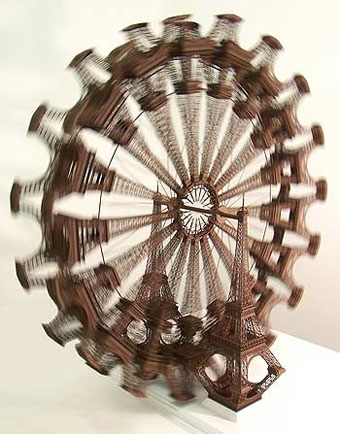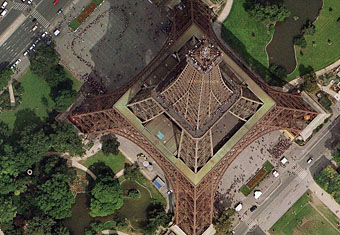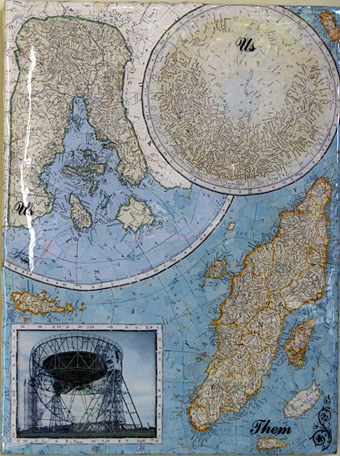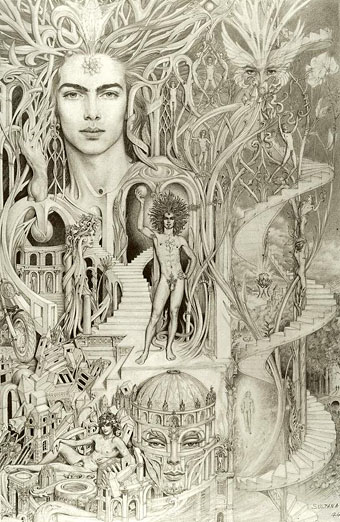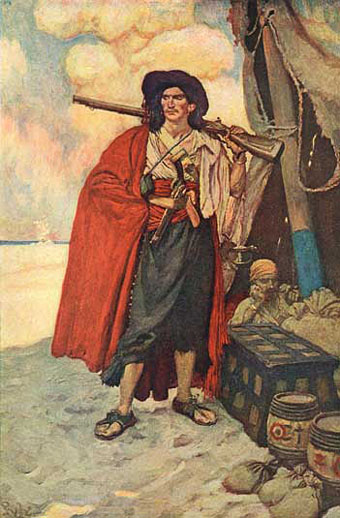
The Buccaneer was a Picturesque Fellow by Howard Pyle (1905).
Seeing as how Johnny Depp and co. are sailing the Spanish Main once more (to mixed reviews, unfortunately), now is perhaps a suitable moment to note the genesis of our popular conception of buccaneers. The famous characters of the Wild West were being mythologised while many of them were still alive and some survived long enough to be consulted by filmmakers such as John Ford when the first of the silent Westerns were being made. Pirates had their exploits recounted in tabloid fashion via books like The Newgate Calendar but our romantic image of the pirate comes primarily from Robert Louis Stevenson and artist/writer Howard Pyle (1853–1911).
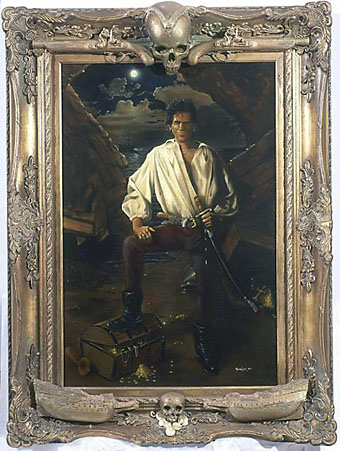
Keith Richards by Paul Karslake (1998).
Pyle’s articles for Harper’s Monthly Magazine in the early 1900s were later collected as the very popular Howard Pyle’s Book of Pirates, “Fiction, Fact & Fancy concerning the Buccaneers & Marooners of the Spanish Main”. The considerable gulf between fact and fiction can be see in early pirate portraits, most of which are crude woodcut renderings. Pyle ignored these for the most part, relying on imagination to exaggerate details of worn-out 18th century clothing in much the same way that Sergio Leone and others exaggerated certain qualities of 19th century garb for their Westerns, turning what would have been a rather sorry reality into something more visually thrilling. Hollywood costume designers have used Pyle’s paintings as source material for pirate characters ever since so it’s perhaps fitting that Johnny Depp’s conception of Jack Sparrow’s character also came from a painting, Paul Karslake’s portrait of Keith Richards posing as a pirate. And now Richards is in the latest film playing Sparrow’s father…
• Howard Pyle at 100 Years of Illustration
• A Pyle pirate gallery
Elsewhere on { feuilleton }
• The illustrators archive
Previously on { feuilleton }
• Coming soon: Sea Monsters and Cannibals!
• Seamen in great distress eat one another
• Druillet meets Hodgson
• Rogue’s Gallery: Pirate Ballads, Sea Songs, and Chanteys
• Davy Jones

